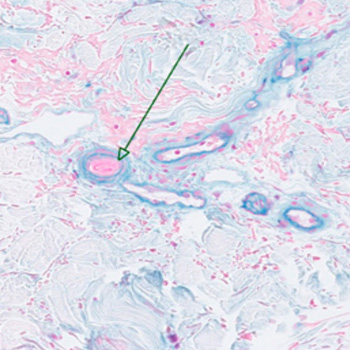Keywords
Hydrophilic polymer embolisation, endovascular procedure
Abstract
Background: Hydrophilic polymer gel coatings are used on different intravascular devices to prevent vasospasm and thrombosis. However, it may become dislodged from these devices, leading to ischaemic complications in various organs including the skin, kidneys, brain, heart or lungs. Hydrophilic polymer embolisation (HPE) is a rare complication following endovascular procedures that is currently not fully recognised. The current knowledge of this phenomenon is based on reports consisting of histologic evidence of foreign polymers in the affected organ.
Case description: A 76-year-old male with a history of hypertension, type 2 diabetes, renal cell carcinoma and chronic kidney disease underwent endovascular stenting of the superficial femoral artery due to critical limb ischaemia of the right foot. The patient had an acute kidney injury following the procedure. Upon examining the legs, there were tender non-blanching macular lesions on the right lower limb. A skin biopsy of the lesion was performed and showed hydrophilic polymer embolisation. Unfortunately, a few weeks later the patient was readmitted due to a worsening of the right foot wound situation, which required below-knee amputation.
Conclusion: HPE is a rarely reported complication after endovascular interventions, with the potential to embolise to multiple organs. By observing skin manifestations, it is possible to aid the early detection of ischaemic events in other organs and identify their underlying causes. Generally speaking, the course is benign and self-limiting when the skin is involved, but may be more sinister especially when other organs (e.g. brain) are involved.
References

Views: 307
HTML downloads: 73
PDF downloads: 196
Published:
2023-11-09
Issue:
2023: Vol 10 No 12
(view)










